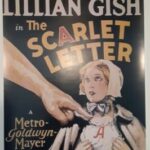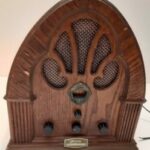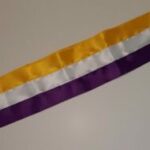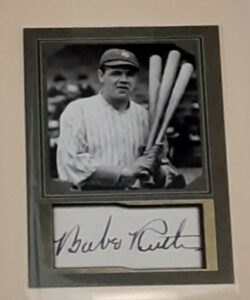This trunk contains lesson plans, worksheets, teaching artifacts, primary sources, and supplemental information relating to the 1920s decade from multiple perspectives.
Following World War One, American culture underwent dramatic changes, creating different norms in families, society, and popular culture. During the 1920s there were two constitutional amendments which would forever change the shape of the United States. The 18th Amendment banned the sale and production of any alcoholic beverages, and the 19th Amendment granted women the right to vote. With the ban on alcohol in place, people began to have underground clubs and speakeasies which would product their own alcohol and sell it at a high price. During the Twenties, these clubs became increasingly popular, not only because it gave people access to alcohol, but also because it gave people a place to go listen to music, often jazz, but also a place to dance such popular dances as the Charleston. The 19th Amendment gave women the right to vote throughout the United States. This new-found power and privilege is often seen as the first step in the liberating movement for women in this country.
During the “Roaring Twenties” a federal highway system was organized and the production and sale of automobiles tripled. Not only were people moving at a faster rate now, but ideas were spreading as well, for this was also the golden age of the radio. Because of the wealth of ideas that were being spread across the country at such a fast rate, the “flapper” trend spread across the nation. Not only was she seen in the upper-class white clubs of Chicago or Atlanta, but also across race and class lines in Harlem and the Deep South.
Mass production and the development of synthetic fabrics granted almost everyone access to beautiful clothing and shoes. The costume image in our minds of a woman of the “Roaring Twenties” is likely to be the flapper; however, flappers did not truly emerge until 1926. While these women were not called flappers until the late 1920s, there was much going on in the country during this time period which would pave the way for them to become this embodiment of the Jazz Era.
The new-found freedom which women found was put on a visual display through a change in acceptable fashion trends. Traditionally, a proper woman would always wear her hair long, but this new woman, or “flapper”, would have had a bobbed or short hair cut. She would have worn makeup, and might have possibly applied it in public, which would have previously been a major faux pas. The dress of this modern woman was also altered into a baggy, shapeless dress which would have revealed her arms and her legs from the knee down. These young women were often thought of as a little fast and brazen, but they also embodied the Jazz Age spirit.
download teacher materials PDF
Lessons:
- Women’s Suffrage
- Fame and Celebrity in the 1920s
- Twenties Tech
- Flapper Culture
- Crime and Prohibition
- Boom and Bust
- The Great Migration and Race in the 1920s




